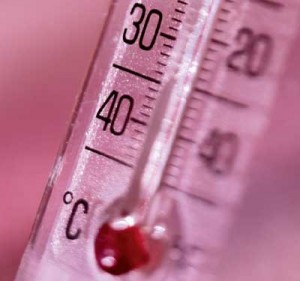Fever- Learn the basics and the diagnosis process
Fever is when the human’s body temperature goes above the normal range and is normally when the body temperature is above 37.2 degrees Celsius. For starters, it is normally an early sign of an infection whereby the body makes efforts of fighting a bacteria and the process rises the temperature. Fever never chooses anyone and hence can attack everyone but kids are the most vulnerable. This is now where one requires advice for a great nursing diagnosis for fever. The nursing plan will help know the cause of fever and also the extent at which is has gone so as to stabilize it.
There are instances when fever rises too high and this leads to bigger complications. However, nurses and doctors with nursing diagnosis for fever knowledge will insist that fever in mild level needs no stabilizing since it is easily fighting against bacteria. 37.2 degrees will always be mild and should not be brought down not until it goes beyond 39.4 degrees which clearly indicates there is more than just the suspected illness.

Signs and symptoms
A patient at this level need not to say what he/she feels since the signs are clearly evident. You need to know that fever in terms of symptoms and signs have no range. The most common sign which is also a symptom is sweating and at the same time freezing even on a hot day.
If these effects occur as your nurse is carrying out your diagnosis, they have to change their mode of treatment and speed it up. Nursing diagnosis for fever will also encounter Seizure which is also part of the signs. A child could be in great danger if seizure takes place when there is no doctor nearby and hence, parents need to be on a great watch out for the children who have signs of fever. Nurses’ main goal here is bringing the temperature back to the normal limits. A nurse should monitor not just the temperature of the patient but that of the environment as well.
Types of fever
Here are some types of fever that nurses need to be aware of: septic goes first. This is where temperature rises up high at night but then goes back slightly above normal in the morning hours and patients under this condition will always complain of chills as well as sweating. Remittances seconds and the levels of temperatures fall regularly just never to normal.
Remittances fever is the most common fever for patients who suffer from malaria. Thus, doctors have quite an easy time dealing with these patients. However, this does not mean that doctors have to work with their assumptions since some fever types can be chronic and hence, nurses have to be on alert to ensure there is no room for bacteria infection. Intermittent fever is where fever at least drops to normal for some hours and lastly, continuous fever which has disparities of not more than a degree.
A nursing diagnosis for fever is very crucial since all the above levels and types have to be in mind. This is the best way to help know how to treat the problem. Like stated above, mild fever does not need to be brought down but in instances where it has been caused by a bacterium or virus, an antibiotic should be prescribed. Note that the antibiotics cannot kill a virus; however, it prevents infections from reaching secondary levels. Remember that fluids are very essential when fever is high to avoid dehydration. Hence, take a lot of water and at the same time, ensure that the water is clean to avoid typhoid which also brings fever.